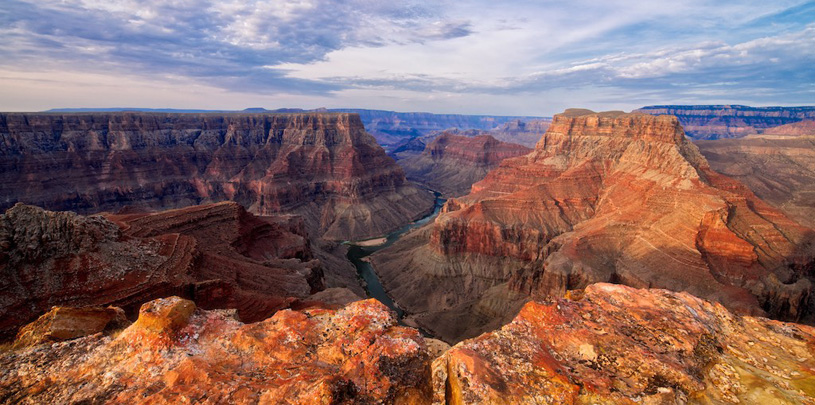
 by Roger Clark, Grand Canyon Director
by Roger Clark, Grand Canyon Director
Fierce years of fighting a well-funded campaign to build Grand Canyon Escalade, a mega resort and tramway on the canyon’s east rim, have finally paid off.
As for the project, Grand Canyon Escalade, this Administration has already stated it does not support the Grand Canyon Escalade project and that position has not changed….it is not in the best interest of the Navajo Nation and the Navajo people.
– Russell Begaye, President of the Navajo Nation
In 2012, local residents and family members formed Save the Confluence to oppose outside developers’ plans to construct hotels and restaurants on Grand Canyon’s east rim and a tram to carry up to 10,000 tourists a day down to the confluence of the Colorado and Little Colorado rivers.
This week’s inauguration of President Russell Begaye effectively ends promoters’ push for approval by the Navajo Nation. The era of Escalade advocates employed within the Navajo president’s office, is over…at least for now.
At the inaugural podium, the former president presented the incoming president with a written agreement to sign in front of hundreds of witnesses.
The next morning’s headlines proclaimed: “Begaye Backs Aerial Tram: The new Navajo president agrees to advance the Escalade project in the Grand Canyon.” However, neither the new president nor his staff had read the document and were “blindsided” by Escalade’s exiting advocates.
Save the Confluence families and allies immediately asked the new Begaye-Nez administration to reject the agreement and to issue a definitive statement against Escalade.
The next day’s headlines read: Navajo President Takes a Firm Stand Against Grand Canyon Tram. “Begaye issued a statement saying he's opposed to the project and always has been. His spokesman Eric Descheenie added that Begaye was blindsided by the agreement and didn't actually read what he signed.”
Vice President Jonathan Nez said “any attempts to pass legislation to proceed with the development would be vetoed by the president. Nez said the administration's stance on the issue stems from opposition from nearby communities who view the area as a sacred place and are advocating to protect the land.”
Save the Confluence family members expressed relief and thanked the new leaders for ending their “nightmare” under the Ben Shelly administration. “We believe ‘the two mighty’ rivers, the Colorado and the Little Colorado, have spoken.” And added that “we hope the land users [can] re-establish our relationship with…sacred-banded cliffs and canyons…[and the] forces which have existed since time immemorial.”
They expressed appreciation “to our neighboring tribes, countless activists, and the 3,000 Navajo individuals who signed our petition, in addition to the Navajo chapters that stood with us against the development at Grand Canyon east rim.” They also thanked “the Grand Canyon Trust, the river runners, the nation and the world to Save the Confluence.”
They concluded that “while the president’s stance is being recognized as good and welcome news, we will remain cautious of the Navajo Nation Council.”
The Grand Canyon Trust pledges our ongoing assistance to Save the Confluence families and efforts to permanently protect the confluence and Grand Canyon from inappropriate development.
The Colorado River below Glen Canyon Dam is heating up. Find out why.
Read MoreGroundwater pumping at a uranium mine near the Grand Canyon will affect the canyon's springs, scientists says.
Read MoreArizona Governor Katie Hobbs is the latest elected official to call for an environmental review of Pinyon Plain uranium mine.
Read More